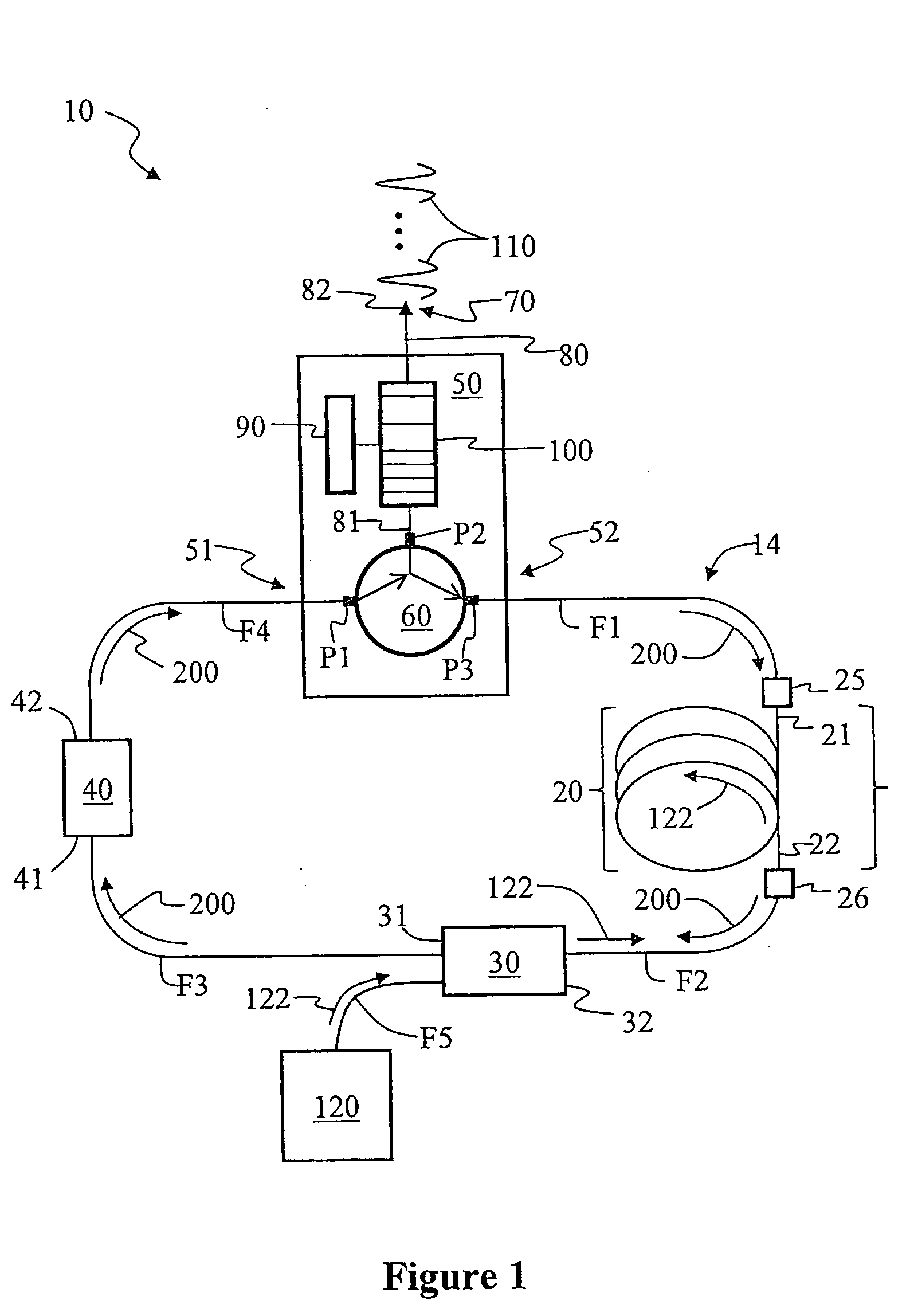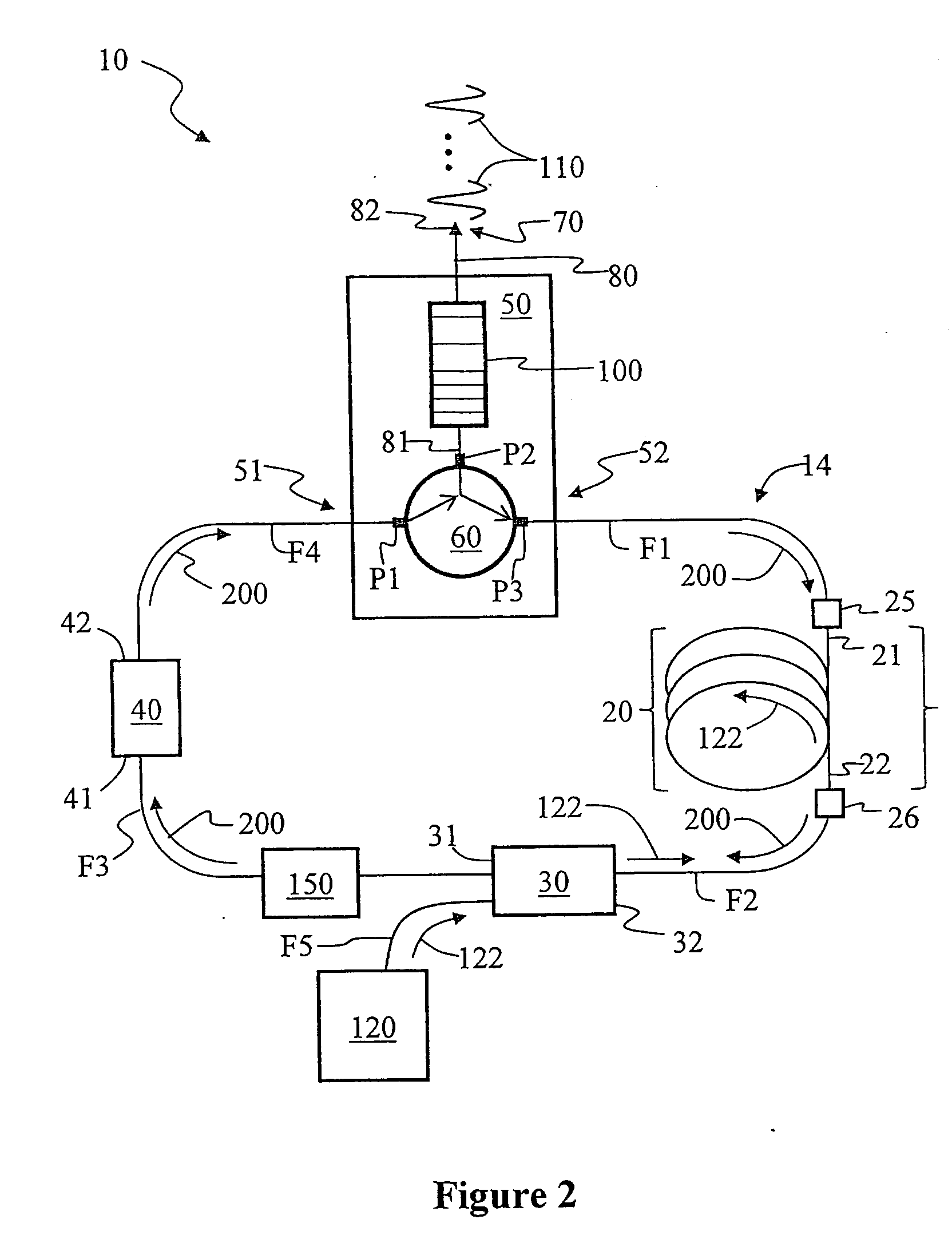Low-repetition-rate ring-cavity passively mode-locked fiber laser
a fiber laser and low repetition rate technology, applied in the field of fiber lasers, can solve the problems of spurious reflection in every laser cavity, increased fiber cavity length, and detrimental nonlinearities of optical fiber, and achieve the effect of low repetition ra
- Summary
- Abstract
- Description
- Claims
- Application Information
AI Technical Summary
Benefits of technology
Problems solved by technology
Method used
Image
Examples
specific example embodiment
[0047]FIG. 3 is a specific example embodiment of the ring-cavity passively mode-locked fiber laser 10 of the present invention as constructed by the inventor based on the above-described generalized embodiments. Saturable absorber 40 was formed using a three-port circulator 60 and a semiconductor-based saturable-absorber mirror (SAM) 46 having a recovery time of about 10 ps. SAM 46 was optically coupled to input / output port P2 via an optical fiber section F6. A highly Yb-doped optical fiber having a length of 1 m was used for doped optical fiber section 20.
[0048]CFBG 100 was an off-the-shelf grating having a center wavelength of 1051 nm, a reflectivity of 96%, and a bandwidth of 15.5 nm. While the particular CFBG 100 used did not have optimized properties, it provided good performance and confirmed the basic operating principles of the invention. The various optical fiber sections F1 through F4 and optical fiber section 20 used to form ring cavity 14 had normal dispersion around the...
PUM
 Login to View More
Login to View More Abstract
Description
Claims
Application Information
 Login to View More
Login to View More - R&D
- Intellectual Property
- Life Sciences
- Materials
- Tech Scout
- Unparalleled Data Quality
- Higher Quality Content
- 60% Fewer Hallucinations
Browse by: Latest US Patents, China's latest patents, Technical Efficacy Thesaurus, Application Domain, Technology Topic, Popular Technical Reports.
© 2025 PatSnap. All rights reserved.Legal|Privacy policy|Modern Slavery Act Transparency Statement|Sitemap|About US| Contact US: help@patsnap.com



